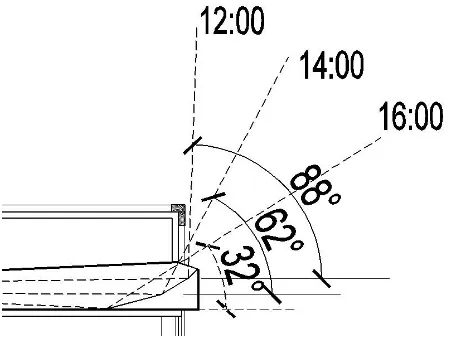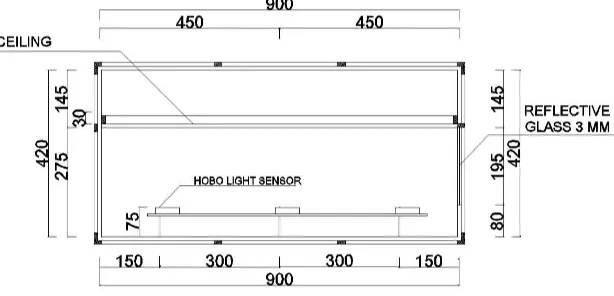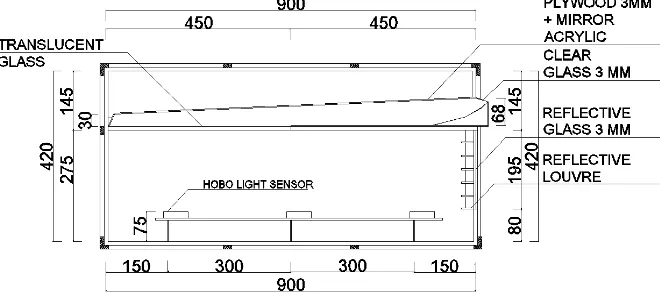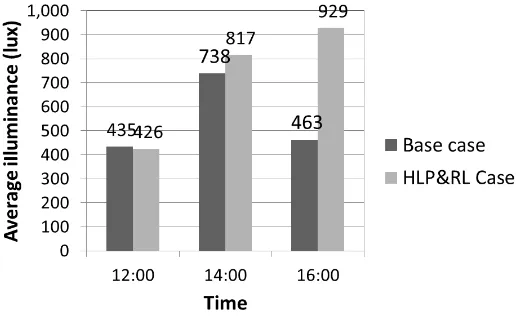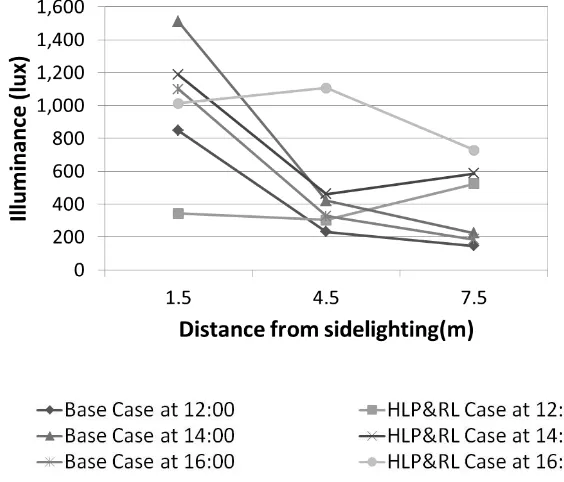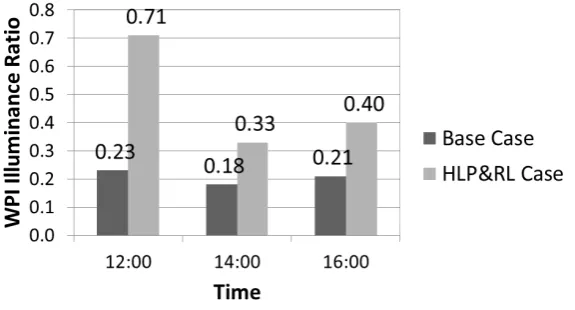INTERNATIONAL JOINT-CONFFERENCE SENVAR-iNTA-AVAN 2015
24-26 November 2015 Faculty of Built Environment, Universiti Teknologi Malaysia,
All right reserved. No part of this publication may be reproduced or transmitted in any form or by any means, electronic or mechanical, including photocopy, recording or any information storage and retrieval system, without prior permission in writing from the publisher.
DISCLAIMER
ISI PUBLICATION holds no responsibility on any images or graphs illustrated use in the paper contents. The Author warrants that the Article is original work and has not been published before in any form and that it does not infringe upon any copyright, contains no libelous or otherwise unlawful statements, and does not otherwise infringe on the rights of others, and that any necessary permission to quote from another source has been obtained.
PROCEEDING
The International Joint Conference SENVAR-iNTA-AVAN 2015
“Wisdom of the Tropics: Past, Present and Future”
24-26 November 2015 Level 4, Dewan Sultan Iskandar Universiti Teknologi Malaysia
81310 UTM Johor Bahru, Johor, Malaysia Tel: +607-558 4286
Associate Prof Dr Syed Iskandar Ariffin
PREFACE
Bismillahirrahmanirrahim
All praise to Allah s.w.t the Most Gracious and the Merciful for giving all His Rahmah and Barakah to complete the International Joint Conference proceedings of SENVAR-iNTA-AVAN (SiA2015) jointly organised by Institut Sultan Iskandar (ISI) - Centre For The Study of Built Environment in The Malay World (KALAM) of Universiti Teknologi Malaysia - Graduate School For International Development & Cooperation (IDEC) of Hiroshima University - Center for Advanced Studies in Architecture (CASA) of National University of Singapore, and supported by Universiti Teknologi Malaysia (UTM), Hiroshima University (HU) from November 24 to 26, 2015 in Universiti Teknologi Malaysia, Johor Bahru, Malaysia.
The theme for SiA2015 Conference is “Wisdom of the Tropics: Past, Present & Future”. SiA2015 conference brings together an international community of experts to discuss the state-of-the-art, new research results, perspectives of future developments, and innovative applications relevant to sustainable building design, vernacular architecture, tropical architecture, urban planning, climate change, green technology, socio-economic and sustainable habitat.
More than 200 scholars and researchers from different background and countries were invited to submit their papers, and of these, about 100 people submitted their full papers. These reviewers represent 10 different countries, which provided a broad set of perspectives to the research arena. I would like to thank all these reviewers for their time and effort in reviewing the papers. Without this commitment it would not be possible for the proceedings to be published. The quality of the accepted papers are attributed to the authors and also to the reviewers who have guided the necessary improvement.
Enough thanks cannot be expressed to our distinguish key note speakers Architect Kengo Kuma, Architect Razin Mahmood making themselves available and all other participants, sponsors, supporters, volunteers and media for all their valuable contributions in the conference. Also, special thank you to the Vice Chancellor UTM Prof. Datuk Ir. Dr. Wahid Omar, Director of The Centre of Built Environment in the Malay World or Pusat Kajian Alam Bina Dunia Melayu (KALAM) Associate Professor Dr.Raja Nafida binti Shahminan, Research Fellow from Graduate School for Internatioanl Development and Cooperation (IDEC) Hiroshima University Associate Professor Dr. Tetsu Kubota, Director of CASA (Centre for Advanced Studies in Architecture) National University of Singapore Associate Assistant Professor Dr. Widodo Johannes, Deputy Director of Institut Sultan Iskandar Associate Professor Dr. Syed Ahmad Iskandar bin Syed Ariffin and all the organizing committee members that have worked so hard to ensure that this conference and the publication of the proceeding a great success. The SiA2015 conference and proceedings are a credit to contribution of a large group of people and thus we should be proud of the outcome.
Best Regards,
Chair,
Prof Dr Mohd Hamdan Ahmad SiA2015 Conference
Contents
Credit title i
Preface ii
Contents iii
ST1 SUSTAINABLE BUILDING DESIGN
Plant selection criteria for landscape planning in the tropical urban environment CL Tan, NH Wong SK Jusuf, ZQ Chiam
1-1
Daylight Performance through Different Types of Glazing in the Tropics Christopher Y.S. Heng, D. R. Ossen, Y. W. Lim
1-10
Retrofitting the Building B12 Faculty of Built Environment Universiti Teknologi Malaysia Johor Bahru, Malaysia
Eka Sediadi, Aminatuzuhariah Megat Abdullah, Abdullah Sani Ahmad
1-20
Biomimicry Principles in Green Building Index Malaysia Noor Aziah Mohd Ariffin, Salwa Abdelkarim Gad
1-30
Integration of Building Information Modelling (BIM) with Green Façade Retrofit Design in Malaysia
Fatemeh Shahsavari, Lim Yaik Wah, Ali Eftekhari
1-41
Interior Design Concept and Procedure of Green in Personal Spaces Ismail Jasmani
1-51
The Development of Ketib's Houses in Kauman the Batik Tourism Kampong at The Region of Strategic City
Tri Yuni Iswati
1-63
Impact of Installing Air conditioner on Unconditioned Building E. Djunaedy, S. Syafitri, M. R. Kirom
1-73
“Scaled Constructed Wetland”, An alternative Waste Water Treatment for Low Income Settlement
Haryati B. Sutanto
1-81
Assessment of Acoustics, Lighting, and Thermal Conditions at the Main Stadium of Gelora Bung Karno, Jakarta
R.A. Mangkuto, I. Prasetiyo, R. Romadhon, J. Sarwono
1-90
Comfortable Indoor Temperatures and the Climate: An Adaptive Model for Japanese Dwellings
H.B. Rijal, M.A. Humphreys, J.F. Nicol
Natural Ventilation and Cooling System for Apartment Building Complexes in Tropical Climate
Jaepil Choi, Youngwoo Kim, Youngjun Choi, June-kyung Kang
1-110
Towards Sustainable Architecture: Performance Evaluation of Air Well House in Tropics Pau Chung, Leng, Mohd Hamdan Ahmad,Dilshan Remaz Ossen, Malsiah Hamid,
Nooraishikin Minhat, Fazilah Ali, Nurul Haziella Binti Najat, Ungku Nur Haniz binti Ungku Mohd Aziz
1-120
Women’s Perception on Expected Lifestyle in Affordable Housing in the Context of Bangladesh
Sadia Afrin, Tareef Hayat Khan
1-134
Comparative analysis of factors influencing window-opening behavior in residential buildings of Southeast Asia
H. Mori, H. Shigekane, T. Kubota, M. T. Arethusa
1-144
Green Retrofitting of Existing Institutional Buildings Framework in Nigeria S. A. Kawuwa, S. A. Ahmed and H. Bobbo
1-154
Effect of Retro Reflective Film Glass on Urban Heat Island in the Tropics Norishahaini Mohamed Ishak, N.H. Wong, S. K. Jusuf, Y.X. Sim, N. Tsutomo
1-162
Measurement Analysis of the Soundscape of Care Units in a Private Hospital in Bandung IRN Azzahra, J Sarwono, I Prasetiyo and SS Utami
1-173
Applying predicted urbanized temperature for building energy simulation in the tropics M. Ignatius, N. H. Wong, S. K. Jusuf
1-182
The Design of Javanese Gamelan Concert Hall Based on Optimum Acoustic Parameters F. Abdala, Stefanus, I. G. N. Merthayasa, J. Sarwono, Suyatno
1-193
The Influence of the Acoustic Characteristic of Ceiling to the Speech Privacy in an Open Plan Office
A. P. Rachman, I. R. N. Azzahra, J. Sarwono, S. S. Utami
1-203
Improving The Acoustics of University Classroom using Simulation Approach J. Sarwono, S. Tharrannisa, R. K. Putri, S. S. Utami
1-212
Collaboration of Two Optical Daylighting Systems at Office Building in the Tropics Feny Elsiana, Frans Soehartono, Luciana Kristanto
1-223
ST2 SUSTAINABLE URBAN DESIGN & PLANNING
Validation of 3D Microclimate Simulation as Quantitative Analysis for Urban Configuration Study in Hot and Humid Region
Lin Yola, Ho Chin SIong
The Urban Architectural Concept of the Tidal River Area
in Banjarmasin’s Old Town in the Pre-colonial and Colonial Eras
2-1
Kusliansjah Karyadi, Siahaan Uras, Tobing Rumiati R
The Breathability of Idealize City Due To the Effect of Various Upstream Building Arrangements
Muhd Azhar Zainol, Azli Abd Razak, Naoki Ikegaya, Sheikh Ahmad Zaki
Framework for Streetscape Design in Relation to Walking Comfort: A Case Study of IIUM Campus
Amanina Nashar, Nor Zalina Harun, Syahriah Bachok
Influence of Built Form in Urban Ventilation Assessment of Tropical Cities with Weak Wind Conditions
M. A. M. Rodzi, A. Abd Razak, S. A. Zaki
The Revitalization of the Tunjungan Corridor based on the Sustainable Streetsscape Bambang Soemardiono, Sri Nastiti Noegrahani Ekasiwi, Defry Agatha Ardianta
Solar Radiation Simulation for High Density Tropical Singapore Daniel Jun Chung, Hii, Nyuk Hien, Wong
Spatial Development of Riverbanks Meureudu towards Waterfront City Concept and Disaster Mitigation
Mirza Irwansyah, Cut Nursaniah, Laila Qadri
Green Campus in Promoting Green Open Spaces in University Technology Malaysia Kuala Lumpur Campus
Mohammad Bakhshi, Norazli Othman, Mohammad Hussaini Bin Wahab
The influence of tropical urban climate upon the human body Yoshihito Kurazumi, Jin Ishii, Kenta Fukagawa, Ariya Aruninta
Influence of Existing Open Spaces and Vacant Lands on Mitigation of Urban Heat Island in Johor Bahru City, Malaysia
Andhang Rakhmat Trihamdani, Jochen Kraus, Tetsu Kubota, Han Soo Lee
Environmental Affordance of Urban Park in Tropics Nydia Amanda, I Gusti Ngurah Antaryama
The Vitality of a Pedestrian Street in Johor Bahru City
Amir Ghahramanpouri, Sepideh Sedaghatnia, Hasanuddin Lamit, Ahmad Saifuddin Abdullah, Mohd Hisyam Rasidi, and Muhamad Solehin Fitry Rosley
2-28
Influences on the Architecture of Istana Lama Seri Menanti in Retrospective N. ZainalAbidin , R. N. Raja Shahminan and F. K. Ibrahim
3-1
Learning From Mandailing Local Wisdom of Vernacular Architecture Irma NovriantyNasution
The Role of Power in the Existence of Vernacular Buildings T. Saraswati
3-22
Identity and Recognition in Place Making HimasariHananH, D Winawangsari
3-31
Identity Formation Towards Architectural Typology of Negeri Sembilan Traditional Houses Noor Hayati Ismail, Raja Nafida Raja Shahminan , MastorSurat
3-41
Ajami As Wood Paneling Craft In Syrian Art And Interior Ornament ZiadBaydoun and ZumahiranKamarudin
3-50
Islam and Architectural Identity of Banda Aceh Izziah Hasan , MirzaIrwansyah
3-60
The Impact of Transportation Infrastructure Development on the Shifting of Vernacular Architecture in Rote Island – NTT
P. Bawole
3-71
A Study of Typology of Malay Traditional House in Muar
NorazilaBintiMakarulzaman, Associate Professor Dr Raja NafidaBinti Raja Shahminan, DrFawazulKhair Bin Ibrahim
3-81
Visual Inspection on Sources and Factors of Deterioration in Wood Components of Malay Traditional House
ZumahiranKamarudin, SitiNajwaNazuki
3-101
Serambi-house and Jemuran-house: Two Basic Forms of Malay House Type in Malay Peninsula
Yao-Ru Chen, Syed Iskandar Ariffin
3-113
The Malay Identity Conflict in the Mass Urban Housing Malaysia Noor AimranSamsudin and Syed ZainolAbidinIdid
3-126
Passive Cooling System as Sustainable “Nusantara” Architecture Strategy AgungMurtiNugroho
3-138
Local Wisdom, Myth and Pragmatical Interest in Architecture Case Study: Malay Sultanate Palaces in West Kalimantan, Indonesia
UrayFery Andi
3-148
The Traditional Royal Town in Malaysia
Muhamad SolehinFitryRosley, Raja Nafida Raja ShahminanHamidah Ahmad and HasanuddinLamit
3-158
The Socio- Cultural Influences in the Identity of Traditional Landscape of Johor Muhamad SolehinFitryRosley, Raja Nafida Raja Shahminan, Hamidah Ahmad and HasanuddinLamit
Indoor Thermal Environments in Traditional Chinese Shophouses with Courtyards MohdAzuanZakaria, Tetsu Kubota, Seiji Abe
3-187
Analysing the meaning of DataranPahlawan as a ‘new’ public space in a historic city of Melaka
Nor Zalina Harun, KhalilahZakariya, MazlinaMansor
3-198
ST 4 GREEN TECHNOLOGY & ENERGY
Digital Innovation for Sustainable Architecture: Technological and Organizational Barriers Runddy Ramilo, Mohamed Rashid Embi, Sambit Datta
4-1
Indirect Evaporative Cooling for Thermal Comfort in Buildings in a Humid Tropical Climate J.I. Kindangen, H. Luntungan and A.S. Lumenta
4-18
Potential of Energy Saving in Office Buildings in Malaysia: A Survey on Preferred Illumination Levels & Occupants' Satisfaction
Elina Mohd Husini, Fadli Arabi , Assoc. Prof. Dr. Mohd. Zin Kandar Assoc. Prof. Dr. Dilshan Remaz Ossen, Nor Haslina Jaafar, Wan Norisma Wan Ismail
4-28
Thermal comfort and occupant adaptive behaviour in university offices with cooling and free running modes
Mohd Sabri Mustapa, Sheikh Ahmad Zaki Shaikh Salim, Aya Hagishima, Mohamed Sukri Mat Ali
4-43
Thermal Comfort Survey in Office Buildings in Bandung, Indonesia S.A. Damiati, S.A. Zaki, S. Wonorahardjo, M.S. Mat Ali, H.B. Rijal
4-53
A Study on Effect of Kenaf Fiber Composition on Heat Transmission of Hybrid Clay Roof Tile
Tengku Intan Suraya Tengku Aziz, Malsiah Hamid, Zakiah Ahmad, Ramlah Mohd Tajuddin
4-65
Utilization Waste Wood Shavings in Making Hollow Panel Aventi, Ir. MT
4-73
Utilization Waste Spent RCC as Building Material in Making Interlock Block to House Wall Aventi, Ir. MT
4-80
Regional Differences in Electricity Accessibility among the Asian Least Developed Countries Kazuhiro Fukuyo
4-90
Sustainable Drainage System from Urban Designer Perception in University Technology Malaysia Kuala Lumpur Campus
Mohammad Bakhshi, Mohsen Mohtashami , Mohammad Hussaini Bin Wahab
4-100
Carbon Emission Index of a Steam Power Plant Using Biomass Nor Aishah Saidina Amin , Amin Talebian-Kalaikaleih
ST 5 SUSTAINABLE HABITAT & SOCIO-ECONOMIC
Hearth as The Most Dynamic Element in the Sasak House Pancawati Dewi, Hery Budiyanto, Muchisiniyati Safeyah
5-1
Change Management Capability Maturity Framework for Assessing and Improving Contracting Organization’s Time Performance
Ajayi A. Arowosegbe, Mohamed F. Sarajul
5-10
Causes of Building Construction Site Accidents: A Preliminary Descriptive Finding Zainal Abidin Akasah, Amran Asan, Azuin Ramli
5-23
Construction Site Safety: Stakeholders and Effects Zainal Abidin Akasah, Amran Asan
5-34
Level of Self-Directed Learning: A Pilot Study on Malaysia Construction Workers NIM, Norhazren Izatie Mohd, KNA, Kherun Nita Ali
5-41
Local Culture in Architectural Inculturation Joyce M.Laurens
5-51
Environmental Barriers in Vocational Training Centre and Educational Institution Arina Hayati, Kirami Bararatin, Fardilla Rizqiyah, Angger Mahendra
5-59
An Analysis on Muslim Visual Privacy (MVP) in Terrace Housing Designs in Malaysia A.A. Manaf , Zaitonn A.R., Noor Hanita A.M., S., Omer
5-67
Adaptive Reuse Innovations on Transformation of Colonial House into Commercial Buildings in Bandung, Indonesia
Isan Najmi, Wiwik Dwi Pratiwi, Ismet Belgawan Harun
5-80
Relevance of Orientations towards Aesthetics of Self-Shaded Office Buildings K.Mohd Zin, Y.A. Dodo, M.G. Abullahi, S.N. Pontip
5-94
Historical Old “Kampung” Toward Sustainable Green and Clean Habitat
Danny Santoso Mintorogo, Lilianny S. Arifin, Wanda K. Widigdo, Anik Juniwati
5-102
The Biophilic Attachment; Stakeholders Perception on Aesthetic Quality of Ecological Landscape
Muhamad Solehin Fitry Rosley, Raja Nafida Raja Shahminan, Hamidah Ahmad ,Hasanuddin Lamit
5-111
Designing Islamic Art Using Geometers Sketchpad
Mohini Mohamed, Shahrol Ahmad, Aminatuzuhariah Megat Abdulla
5-119
An Analytic Review of the History of the Cluster Houses and its Introduction into Malaysia Mazlin Ghazali, Tareef Hayat Khan, Puteri Sharina Ismail
5-128
Design Optimization for the Performance Of Hidden Beam-To-Column Connection Precast Concrete IBS Building
Nubailah Abd Hamid
ST 6 CLIMATE CHANGE
Identifying Risk Management Practice Gaps among Post-Disaster Resettlement Shelter Donors in Albay, Philippines - Towards a Sustainable Public-Private Partnership (PPP) in Socialized Housing
S. D. Seño
6-1
In-situ Measurements and GIS-Based Analysis of the Microclimate at the Universiti Teknologi Malaysia, Kuala Lumpur
Siti Wan Syahidah, Sheikh Ahmad Zaki, Khamarrul Azahari Razak
6-24
The impact of physical elements of mosque on the perception of children
Jamilia Mohd Marsin, Roslina Sapawi, Syed Ahmad Iskandar Syed Ariffin, Raja Nafida Raja Shahminan
6-34
Spatiotemporal Analysis on the Squatter Development: A Case Study in Kampung Baru, Kuala Lumpur
Nor Suhada Azid, Sheikh Ahmad Zaki, Khamarrul Azahari Razak
6-45
Post-flood disaster responses in Malaysia: Kota Tinggi Resettlement Revisited Nor Izura Tukiman, Renata Tyszczuk
6-55
Climate Change Context: migration and urbanization in Bangladesh Dr. Reazul Ahsan
1-223
Collaboration of Two Optical Daylighting Systems at Office Building in
the Tropics
Feny Elsiana1, Frans Soehartono2 and Luciana Kristanto3
1
Department of Architecture, Petra Christian University, Email: [email protected]
2
Department of Architecture, Petra Christian University, Email: [email protected]
3
Department of Architecture, Petra Christian University, Email: [email protected]
Intensive use of air conditioning encourages building’s plan to be deep with a minimum surface to volume ratio. Modern air conditioned office building in the tropics
are also applied external shading on windows or highly reflective glazing to minimize
radiant heat gain. Those lead to the presence of areas that have insufficient daylight
level at the work plane. Horizontal Light Pipe (HLP) is one of optical daylighting system
that can guide daylight to these areas. Considering that distributing daylight evenly
throughout room is important besides providing sufficient daylight level, a shading
system, Reflective Louvre (RL) is applied. RL plays role in reducing daylight level at areas near to window and improving daylight uniformity inside room. The research’s aim is to evaluate and explain daylight quantity and distribution of HLP and RL at office
space in the tropics. Experiment with physical model 1:10 was used as the research
method. Illuminance was measured using HOBO U12/12 data logger, on a real sky
condition. Comparison of illuminance, daylight ratio and uniformity ratio resulted by
Base Case and HLP&RL Case, a typical office building with sidelighting and an office
building with HLP and RL application sequentially, simultaneously with daylighting
standards were conducted. Results showed that office room with HLP and RL
application had a higher average illuminance and daylight ratio than Base Case. HLP
and RL introduced consistently average illuminance between 400-900 lux, improved
illuminance level at deep area of room as 160-290% and decreased illuminance level
at area close to window as 8-60%. This combination created high uniformity ratio
inside room, as high as 0.33-0.71. At most time, those illuminance value and uniformity ratio had fulfilled office’s daylighting standards.
Keywords: daylighting performance; horizontal light pipe; reflective louvre
Introduction
1-224
building’s volume (Moore, 1993). However, intensive use of air conditioning
encourages building’s plan to be deep, as expressed by Lomas (2007) with a
minimum surface to volume ratio to reduce heat load from building envelope and air conditioning equipment (Givoni, 1998). According to Edmonds and Greenup (2002), modern air conditioned office building are also applied external shading on its windows or highly reflective glazing with severe internal shading to minimize radiant heat gain. Those lead to the presence of areas that have insufficient daylight level, especially at deep area of the building. Daylight level at building in the tropics are typically several times lower than commonly achieved in European and North American buildings (Edmonds and Greenup, 2002). Sufficient daylight level, the first issue, is needed to achieve energy saving through daylighting in the tropics.
The second issue is related with daylight distribution. Besides providing sufficient daylight level, distributing daylight evenly throughout room is also important. According to CIBSE (1999), improvement in daylight level is not effective if daylight quality is low, including uniformly daylight distribution. This research raises two daylighting systems, Horizontal Light Pipe (HLP) and Reflective Louvre (RL) that can deliver daylight to deep areas of the building and increase uniformity ratio inside space sequentially.
Horizontal Light Pipe is one of optical daylighting system (Martin, 2002) which is designed to complement sidelighting, especially for the space in the deep area of the building (Beltran et al., 1997). According to Canziani et al., (2004), HLP collects, redirects and in some cases, concentrates or collimates the incident luminous flux with aperture situated at building facade; transports daylight inwards the building through pipe and distribute it into the deep area of the rooms via distribution opening.
Previous researches on HLP were conducted by Chirarattananon et al., (2000)
by constructing a model based on light pipe’s general configuration at plenum in a test
room and comparing the calculation results with results from physical measurements. Development of few methods to improve light pipe’s performance were conducted by Hien and Chirarattananon (2007) through tilt able mirror; Scartezzini, Courret (2002) through anidolic ceiling and Hansen et al., (2001) through Laser Cut Panel. Beltran et al., (1997) studied four type of HLP on office room. HLP type C, which gained the best daylighting performance from previous study then was developed together with Mogo (2007) and Uppadhyaya (2008). The effect of HLP branching on daylighting performance was also studied by Elsiana et al., (2014).
1-225
aperture’s orientation to the West for HLP in the tropics, and utilization of mirror acrylic
as specular reflective material.
Louvre is included in shading system and designed to block direct sun and admit diffuse light (Martin, 2002). According to Hashemi (2014), Reflective Louvre (RL) reduces average daylight in the room, but potentially decreases the need for artificial lighting by improving daylight distribution in the building. Louvre is composed of multiple horizontal, vertical or sloping slats of various shapes and different surface finishes (Freewan et al., 2009). They are used to partially or completely obstruct sun’s rays and can be oriented to any direction and latitude.
Previous researches on RL showed its reliability in improving daylight distribution and reducing the need of electric lighting. Those researches including static optical louver by Konis and Lee (2015), semi-silvered reflective louver by Leung et al., (2013), automated reflective louvre system by Hashemi (2014), and interaction between louvers and ceiling by Freewan et al., (2009). Daylight level and daylight distribution at office space in the tropics, which were generated by collaboration of two daylighting systems, HLP and RL, were described in this paper.
Collaboration of Horizontal Light Pipe and Reflective Louvre at Office Room in the Tropics
Several adjustment of Beltran and Uppadhyaya’s HLP prototype were done in this study, including reflector’s tilt design for Surabaya (latitude 7°14'24"S), aperture’s orientation to the West for HLP in the tropics, and utilization of mirror acrylic at HLP’s interior. Surabaya is located at tropical area and has partially cloudy sky condition (Lauber, 2005).
In general, light pipe had trapezoidal section in plan view and elevation. The rear of the light pipe was 0.60 m in width. Aperture, an external planar closing element that collect, redirect sunlight in order to optimize the direction of the incoming solar rays as the solar position varies (Canziani et al., 2004) had 0.6 m in height and 1.80 m in width. Was placed on tropical climate, HLP’s aperture orientation has been directed to East or West, according to Chirarattananon et al., (2000) that for tropical location, aperture of light pipe faces either East or West to utilize the sunlight in the morning or in the afternoon. Single clear glass with Visible Transmittance 88% covered HLP’s aperture which was oriented to the West in this study.
Pipe, a rectilinear duct with optical properties suitable for deliver sunlight into room (Canziani et al., 2004) had 0.6 m in height and used mirror acrylic (85% specular reflectivity) on its inner surface. This pipe was equipped with reflector that had
adjusted to sun’s altitude at 12:00, 14.00 and 16.00 at research location, Surabaya,
1-226
the same efficiency in tropical area (Fig 1). Surabaya sun’s altitude data was collected
using Ecotect 2011 software. Overall length of light pipe was 9 m.
Distribution element consists of diffuser, a natural light spreader into the room, and had Visible Transmittance (VT) of 88%. Diffuser was placed on partially daylight area, at a distance of 4.5 m from sidelighting.
Figure 1: Reflector’s tilt adjustment toward sun’s altitude at Surabaya (latitude
7°14'24"S)
Reflective louvre had 6 m in length and 0.3 m in width. The upper surface was covered with mirror acrylic to reflect sunlight. Each slat was installed with equally distance between one another. Horizontal position of RL was considered to make the results of this study comparable with other passive daylight guiding system, according to Leung et al., (2013).
Experiments were conducted on open plan office room in the tropics. This room had 6m in width and 9m in length, assumed consist of 9 workers (according to Meel et al., 2010) who had area of 6m2 per person. The office had 2.75m in ceiling height and 4.2m in floor to floor height, synthesized from office’s floor to floor height consideration of typical high rise office building in Asia of Kohn and Katz (2002).
Office space had a sidelighting on west wall, 6m in width and 1.95m in height. Highly reflective glass was used for sidelighting, with Visible Transmittance (VT) 0.14, representing a modern air conditioned office space in the tropics to minimise radiant heat gain. Interior reflectance of wall, ceiling and floor are 0.66, 0.74 and 0.43 sequentially.
Method
1-227
and uniformity ratio of Base Case and HLP&RL Case, a typical office building with sidelighting and an office building with HLP and RL application sequentially (Figure 2-5). Those illuminance and uniformity ratio were also compared with daylighting standards.
Office room’s wall and floor were constructed using GRC (glass reinforced
cement), painted in its interior wall. Surface reflectance of wall, ceiling and floor were 0.66, 0.74 and 0.43 sequentially. Visible Transmittance (VT) of sidelighting, a clear glass with reflective film was 14%, representing high reflective glass in modern air-conditioned office building in the tropics.
Figure 2: Plan of typical office space with sidelighting
Figure 3. Section of typical office space with sidelighting
HLP was constructed using plywood and placed inside plenum area of office
space model. HLP’s interior surfaces were covered using mirror acrylic to deliver
sunlight into room. Plywood was also used to construct RL, which was coated with mirror acrylic at its upper surface.
1-228
condition of Surabaya (partially cloudy). Six sensors were located on 0.75 m above floor in each model. According to the manufacturer’s technical datasheets, the sensors were appropriate for relative daylight measurements. Light meter was used to measure outdoor horizontal illuminance. All experimental setup was placed on the roof top of seven-stories building at Petra Christian University.
Figure 4: Office Space with HLP and reflective louvre’s plan
Figure 5: Office Space with HLP and reflective louvre’s section
Results and Discussion
1-229
Illuminance and Daylight Ratio
In general, HLP and RL application in office room had a good daylighting performance. Combination of two daylighting systems, HLP and RL generated average illuminance by 426 lux, 817 lux and 929 lux at 12:00, 14:00 and 16:00 sequentially. Those results were fulfilled recommended lighting levels for simple visual task (300-750 lux) at 12:00 and normal visual task (500-100 lux) at 14:00 and 16:00. These facts reinforced Beltran et al., (1997)’s statement about HLP’s function as a complement of sidelighting and expanded validity of that theory on combination other daylighting system, reflective louvre.
Table 1: Comparison of average work plane illuminance and daylight ratio of Base Case
and HLP&RL Case
Time Average work plane
illuminance (lux)
Compared with recommended Daylight Factor (DF) by Heerwagen (2004), except 12:00, average daylight ratio resulted by HLP and RL were above minimum DF in buildings for general offices (1-2%). At 12:00, average daylight ratio of both Base Case and HLP&RL Case were under minimum DF in buildings for general offices.
Observation of illuminance value on overall measurement points inside office space showed that Base Case had illluminance value under 300 lux as big as 67%, 33% and 50% at 12:00, 14:00 and 16:00, sequentially (Figure 6). Those points were at deep area of the room, at the distance further than 4.5m from sidelighting. Different results appeared on HLP&RL Case, where there were no illuminance value under 300 lux at 12:00 and 16:00. Only 17% of measurement points inside HLP&RL Case had illuminance values under 300 lux. Those points were at deep area of the room, near side wall.
1-230
817 lux, Base Case and HLP&RL Case sequentially. Highest improvement of average illuminance occurred at 16:00, as big as 101%, from 463 lux into 929 lux, Base Case and HLP&RL Case sequentially. Small reduction of average illuminance occurred at 12:00, as big as 2%, from 435 lux into 426 lux, Base Case and HLP&RL Case sequentially. At high altitude angle (12:00), RL’s role in decreasing average illuminance in space appeared most.
Figure 6: Percentage of measurement point with illuminance level below 300 lux
Figure 7: Average illuminance comparison between Base Case and HLP&RL Case
Further analysis about RL’s role in decreasing daylight level was done by
1-231
and 10). Those results reinforced statement of Gago et al., (2015) on reflective
louvre’s role in decreasing illuminance level at area close to sidelighting.
Figure 8: Iluminance level of Base Case and HLP&RL Case at room section
(measurement at 30 July 2015, 12:00, exterior horizontal illuminance 92.620 lux)
Figure 9: Iluminance level of Base Case and HLP&RL Case at room section
1-232
Figure 10: Illuminance level of Base Case and HLP&RL Case at room section
(measurement at 30 July 2015, 16:00, exterior horizontal illuminance 16.860 lux)
Figure 11: Pattern of work plane illuminance at office room’s section
Illuminance level at the distance 7.5 m from sidelighting (deep area of room), generated by HLP and RL application was higher than office space with sidelighting only. Improvement of illuminance level reached 259% at 12:00, from 146 lux into 524 lux, Base Case and HLP&RL Case sequentially (Figure 8). The same pattern occurred at 14:00 and 16:00, with improvement of illuminance level as big as 161% and 294%, at 14:00 and 16:00 sequentially (Figure 9 and 10).
Highest decrement of illuminance value resulted by HLP and RL application, at area near to sidelighting occurred at highest sun’s altitude (at 12:00). Highest improvement of illuminance level resulted by HLP and RL application, at deep area of the office room occurred at lowest sun’s altitude (16:00). Illuminance from sidelighting dropped off for the area further from sidelighting, but that from the HLP and RL increased towards the interior of the room, under HLP’s distribution opening (Figure 11).
Daylight Distribution
1-233
uniformity ratio was gained using formula in Lim et al., (2012), where higher uniformity ratio indicated better daylight distribution.
WPI Uniformity Ratio = minimum WPI/ average WPI (1)
Where, WPI is work plane illuminance (lux)
Measurement results showed that HLP and RL application improved WPI uniformity ratio. At 12:00, WPI uniformity ratio increased as big as 209%, from 0.23 into 0.71, Base Case and HLP&RL Case sequentially. At 14:00, WPI uniformity ratio also improved as 83%, from 0.18 into 0.33, Base Case and HLP&RL Case sequentially. Similar condition also occurred at 16:00, with improvement of WPI uniformity ratio 90%, from 0.21 into 0.40, Base Case and HLP&RL Case sequentially (Figure 12).
Figure 12: Comparison of WPI Uniformity Ratio of Base Case and HLP&RL Case
1-234
Figure 13: Photo Images at 12:00 (a) Typical Office Room with sidelighting and (b) Office
Room with HLP and Reflective Louvre on July, 30
Highest WPI uniformity ratio generated by HLP and RL application in office room occurred at 12:00, as big as 0.71 (Figure 12). Lowest WPI uniformity ratio occurred at 14:00, as big as 0.33. Those WPI uniformity ratio were in recommendation range of uniformity ratio on working space to maximize daylighting utilization (30-50%). These results showed that combination of two daylighting system, HLP and RL, generated uniformly daylight distribution inside office room. Improvement of illuminance level at the area far from sidelighting by HLP, collaborated with reduction of illuminance level at area near from sidelighting by RL generated uniformly daylight distribution inside overall office space.
Figure 13 shows interior photo images of HLP and RL application inside office space at 12:00. When RL is used as combination with HLP, the illumination over the back wall and ceiling was higher, given the appearance of brighter space.
Conclusion
Application of Horizontal Light Pipe (HLP) and Reflective Louvre (RL) presented in this study had demonstrated their potential to increase daylight level of office space at the tropics. HLP and RL could introduce consistently average illuminance between 400-900 lux, and illuminance level at 500-700 lux at 7.5m from window wall. RL introduced lower light level at the area near to sidelighting than Base Case. Decrement of illuminance level resulted by RL at the area 1.5m from sidelighting reached 8-60%. HLP generated higher daylight level at the area far from sidelighting than Base Case. Improvement of illuminance level at the distance 7.5m from sidelighting were 160-290%.
HLP and RL application distributed daylight more uniform than typical office space with sidelighting only. WPI uniformity ratio generated by HLP and RL are 0.71, 0.33 and 0.40 at 12:00, 14:00 and 16:00. Improvement of WPI uniformity ratio were 83-209%.
Further research, focusing on qualitative assessment about HLP and RL application in office space is needed. Evaluation of energy saving achieved by HLP and RL, optimization HLP and RL’s geometry can also be elaborated on next
research, adapting with the sun’s altitude angle and different opening orientation.
Acknowledgements
1-235
Pipe and Reflective Louvre application in office room.
References
Beltran, L. O., Lee, E. S., & Selkowitz, S. E. (1997). Advanced Optical Daylighting Systems:
Light Shelves and Light Pipes. Journal of the Illuminating Engineering Society, 26(2),
91–106.
Beltran, L.O. and Mogo, B.M. (2007). Development of Optical Light Pipes for Office Space. In
PLEA, November 22-24.
Beltrán, L. O., & Uppadhyaya, K. (2008). Displacing Electric Lighting with Optical Daylighting
Systems. 25th Conference on Passive and Low Energy Architecture, (October), 20–25.
Canziani, R., Peron, F., & Rossi, G. (2004). Daylight and energy performances of a new type of
light pipe. Energy and Buildings, 36(11), 1163–1176.
Chirarattananon, S., Chedsiri, S., and Renshen, L. (2000). Daylighting through light pipes in the
tropics. Solar Energy, 69(4), 331–341.
CIBSE/SLL. (1999). Lighting Guide 10: Daylighting and Windows Design. Chartered Institution
of Building Services Engineers.
Edmonds, I. R., and Greenup, P. J. (2002). Daylighting in the tropics. Solar Energy, 73(2),
111–121.
Elsiana, F., Nastiti, S. and Antaryama, I.G. (2014). The Effect of Horizontal Light Pipe
Branching on Daylighting Performance. In ICEA, September 11.
Freewan, A. A., Shao, L., and Riffat, S. (2009). Interactions between louvers and ceiling
geometry for maximum daylighting performance. Renewable Energy, 34(1), 223–232.
Gago, E. J., Muneer, T., Knez, M., & Köster, H. (2015). Natural light controls and guides in
buildings. Energy saving for electrical lighting, reduction of cooling load. Renewable and
Sustainable Energy Reviews, 41, 1–13.
Givoni, Baruch. (1998). Climate considerations in building and urban design. Canada: John
Wiley and Sons, Inc.
Hansen, V. G., Edmonds, I., & Hyde, R (2001). the use of light pipes for deep plan office buildings: a case study of Ken Yeang’s bioclimatic skyscraper proposal for KLCC, Malaysia. ANZAsCA, 1-8.
Hashemi, A. (2014). Daylighting and solar shading performances of an innovative automated
reflective louvre system. Energy and Buildings, 82, 607–620.
Heerwagen, D. (2004). Passive and active environmental controls: informing the schematic
designing of buildings. New York: McGraw-Hill.
Hien, V. D. and Chirarattananon, S. (2007). Daylighting Through Light Pipe for Deep Interior
Space of Buildings With Consideration Heat Gain. Asian Journal on Energy and
1-236
Kischkoweit-Lopin, Martin. (2002). An overview of daylighting systems. Solar Energy, 73(2),
77–82.
Kohn, A. E. and Katz, Paul (2002). Building type basics for office buildings. New York: John
Wiley & Sons, Inc.
Konis, K., and Lee, E. S. (2015). Measured daylighting potential of a static optical louver system
under real sun and sky conditions. Building and Environment, 92, 347–359.
Lauber, Wolfgang, (2005), Tropical Architecture, New York: Prestel.
Leung, T. C. Y., Rajagopalan, P., and Fuller, R. (2013). Performance of a daylight guiding
system in an office building. Solar Energy, 94, 253–265.
Lim, Y.-W., Kandar, M. Z., Ahmad, M. H., Ossen, D. R., & Abdullah, A. M. (2012). Building
façade design for daylighting quality in typical government office building. Building and
Environment, 57, 194–204.
Lomas, K. J. (2007). Architectural design of an advanced naturally ventilated building form.
Energy and Buildings, 39(2), 166–181.
Meel, Juriaan van; Martens, Yuri and Ree, Hermen Jan van, (2010). Planning office spaces: a
practical guide for managers and designers. London: Laurence King Publishing Ltd
Moore, Fuller. (1993). Environmental control systems: heating cooling lighting. USA:
McGraw-Hill, Inc.
Scartezzini, J.-L., and Courret, G. (2002). Anidolic daylighting systems. Solar Energy, 73(2),
